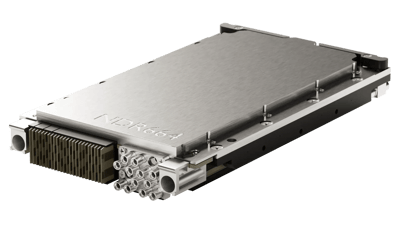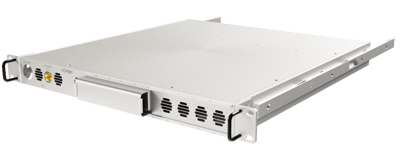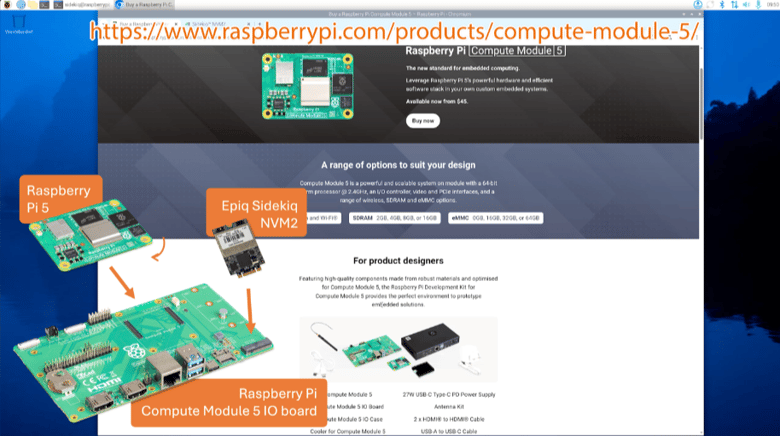Understanding and Overcoming Dead Zones in Commercial Buildings
Gary Schluckbier
12/14/22
We all spend time in commercial buildings — stadiums, airports, shopping malls, office buildings, hospitals, schools and universities — and expect that when we pick up our cell phone, it just works. As it turns out, there is a lot of planning, technology and cost involved in making that seamless in-building wireless experience a reality.
Particularly in commercial buildings, dead zones are areas within where wireless service becomes severely degraded or wholly unavailable. In most of these structures, the building owner has partnered with carriers to install special base stations and antenna systems to provide the ubiquitous coverage consumers expect on a day-to-day basis.
When emergencies happen, however, it's usually another network that first responders rely on for mission critical communications: The emergency responder radio communications systems (ERRCS). ERRCS are the lifeline for police, fire, and rescue in critical situations. ERRCS are almost all based on Land Mobile Radio (LMR) technology that provides coverage to first responders' radios and uses different technology and frequencies than the 4G and 5G of consumer cellular networks. When first responders can't communicate inside a building, the consequences can be catastrophic.
In this post, we'll examine how crucial communications technologies can be harnessed to identify and overcome wireless gaps within commercial buildings to ensure the safety of occupants and visitors.
The Dead Zone Dilemma
Commercial buildings are designed with strength and sustainability in mind — which is great for their durability, resistance to natural elements and eco-friendliness. However, the more durable and energy efficient our buildings become, the more resistant they are to LMR signals, making it difficult for transmissions to penetrate their hardened exteriors.
For example, rebar encased in concrete — and even the electric buzz generated from fluorescent lights — can absorb and interfere with these signals.
The Safer Buildings Coalition outlines 3 integral pillars of in-building public safety communication:
- Mobile 911 calls and texts must get out to first responders with pinpoint location accuracy.
- Mobile mass notifications must reach building occupants.
- First-responder communications within a commercial building must work effectively.
The Mission-Critical Importance of Carrying 911 Calls and Mass Notifications
Almost all emergencies that public safety responds to are initiated by a 911 call to dispatch. Today, the overwhelming majority of 911 calls originate from a cellphone on a 4G or 5G commercial network. If a person is in a building where there is no cellular service, that means that they cannot contact 911 and help will not be coming.
In recent years, public safety agencies increasingly deliver important notifications to the public through mass notifications. Major manufacturers and a majority of universities and military bases push these notifications to the public advising them of life saving information, such as a suspected active shooter or other shelter in place orders. Since these warnings are almost always delivered to phones, this important emergency service is dependent on cellular network coverage in buildings to keep its occupants safe.
Challenges Facing Public Safety Networks
While members of the public use their cell phones as their primary means of communication, first responders depend on purpose-built LMR radios to communicate. Public safety radios and networks are rugged, have higher power, and use spectrum set aside for public safety use. This design maximizes the reliability of communications in emergencies that are chaotic and dangerous. However, limited RF signal performance indoors can lead to miscommunications and communication blackouts during critical responses.
The same challenges that face cellular signals in buildings also affect public safety signals. The difference is that public safety users may visit commercial buildings only rarely, and when they do, the LMR network has to perform. This means that public safety coverage needs to be planned when the building is built or renovated — but how does that happen and who pays for it?
In-Building Wireless Enhancement Systems
Technologies that amplify wireless signals from outside the building and distribute them inside the structure are the typical way to eliminate dead zones within. These enhancement systems consist of a Bi-Directional Amplifier (BDA) and Distributed Antenna System (DAS).
These BDA / DAS systems are necessary to provide wireless coverage to first responders in buildings where public safety signals cannot penetrate — especially important areas of rescue, such as stairwells and basements. Modern fire codes (NFPA 72 and IFC 510.4.1) require public safety network coverage in buildings, which means if coverage is not present, the building owner must install a wireless enhancement system. Most of the bodies that enforce local fire codes, called Authorities Having Jurisdiction (AHJs), require building owners to submit a public safety network coverage plan prior to issuing a building permit, and a test report prior to issuing a certificate of occupancy. This means that planning and testing are important to ensure compliance and to keep a handle on cost. But how can a building owner, contractor, or fire inspector do this testing in an efficient way?
An In-Building Testing Solution That Fits in the Palm of Your Hand
Epiq Solutions and iBwave have teamed up to offer a simple solution that allows non-experts to assess the coverage of public safety networks as well as 4G and 5G networks in their buildings.
PRiSM seamlessly integrates with iBwave Mobile Survey to survey and map coverage as well as identify dead zones in buildings. With the PRiSM scanner, surveys can be completed simply and quickly on a tablet or smartphone. The system shows a heatmap of coverage that can be used to plan a right-sized wireless enhancement system or to produce a compliance report for the AHJ.

A Commitment to Safety In Buildings
As part of an ongoing commitment to public safety communications, Epiq Solutions is teaming with the Safer Buildings Coalition to advance technology and public policy. Epiq Solutions PRiSM product was developed in partnership with the Department of Homeland Security Science and Technology (DHS S&T) directorate and builds upon Epiq Solutions market leading Software Defined Radio (SDR) technology.
We expect our phones to work all the time, whether we're inside a commercial building or not. But what's most important is that first responders are able to communicate efficiently and effectively in the event of an emergency. The PRiSM scanner makes it easy to find and map dead zones so that they can be eliminated — ensuring reliable and compliant communications from within, and making safety a top priority.
Learn more about our PRiSM scanner or read about our partnership with DHS.
SHARE
Tags
STAY INFORMED
Stay up to date with the latest Epiq news, product releases, and more.












.webp?length=400&name=Cyber-Radio-NDR585%20(3).webp)


















.webp?width=70&height=70&name=Vector%20(1).webp)



